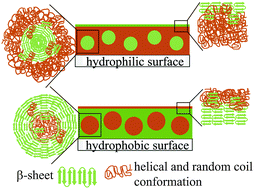Varying surface hydrophobicities of coatings made of recombinant spider silk proteins
Abstract
The engineered spider silk

* Corresponding authors
a
Fakultät für Angewandte Naturwissenschaften, Lehrstuhl Biomaterialien, Universität Bayreuth, Universitätsstr.30, D-95440 Bayreuth, Germany
E-mail:
Thomas.scheibel@bm.uni-bayreuth.de
Fax: +49 921 55 7346
Tel: +49 921 55 7361
The engineered spider silk

 Please wait while we load your content...
Something went wrong. Try again?
Please wait while we load your content...
Something went wrong. Try again?
S. Wohlrab, K. Spieß and T. Scheibel, J. Mater. Chem., 2012, 22, 22050 DOI: 10.1039/C2JM35075K
To request permission to reproduce material from this article, please go to the Copyright Clearance Center request page.
If you are an author contributing to an RSC publication, you do not need to request permission provided correct acknowledgement is given.
If you are the author of this article, you do not need to request permission to reproduce figures and diagrams provided correct acknowledgement is given. If you want to reproduce the whole article in a third-party publication (excluding your thesis/dissertation for which permission is not required) please go to the Copyright Clearance Center request page.
Read more about how to correctly acknowledge RSC content.
 Fetching data from CrossRef.
Fetching data from CrossRef.
This may take some time to load.
Loading related content
